Until a week ago the waters off of Race Point in Provincetown were a pageant of marine life, with divebombing gannets, 80-foot fin whales slicing the surface, dolphins and porpoises circling like gnats and docile North Atlantic right whales skimming blithely by, mouths agape.
The seeming nonchalance of the right whales belied the critical condition of the species as a whole, one that has barely escaped extinction in recent decades but still faces a host of threats. On March 23 the Gazette accompanied a scientific survey team as it investigated a large aggregation of whales off of Race Point. The lazing pod of grazers dispersed this week, but not before interrupting ship traffic in the area for several weeks.
“We’re looking at one of the rarest animals — certainly one of the rarest mammals on earth — and one that is in really severely bad condition as a species and yet people can actually see them off the beaches,” said Dr. Charles (Stormy) Mayo, director of the Provincetown Center for Coastal Studies Right Whale Habitat Studies program. While studying the whales’ behavior and diet, the Center also partners with the division of Marine Fisheries and NOAA to issue ship advisories like one that was lifted on Monday for the area.
The Vineyard has had its own encounters with the critically endangered animals, both historically and in the present day: Some 237 voyages left from Vineyard harbors during the heyday of whaling in the mid-19th century, with right whales as a preferred target, and in more modern times the animals have been the subject of concern to some as wind farms seem poised to dot the horizon. In February Chilmark resident David Damroth spotted at least three animals socializing between the Vineyard and Noman’s Land as he strolled Zack’s Cliffs in Aquinnah. But Cape Codders are accustomed to much higher aggregations that are lured to the bay area by large blooms of zooplankton, particularly copepods.
On the survey, Center for Coastal Studies intern Eliza Ives took to the top deck of the R/V Shearwater armed with binoculars and a clipboard. She has come to know the animals personally, recognizing individual members by their distinct scars and callosities, or calloused lice-infested white protrusions on the creatures’ heads.
With just over 400 animals left in existence, the sight of 30 to 40 animals in one place underscores their vulnerability, and the majority of the group off Provincetown bore scars indicating ship strikes or entanglement in fishing gear, the two largest man-made threats to the critically endangered animals. About 70 per cent of right whales show entanglement scars. The Center for Coastal studies, and organizations like it on the eastern seaboard, respond to whale entanglements, often attempting to unsnarl the giant animals with specially designed poles and equipment, a venture fraught with hazards.
Sometimes the animals do not escape, though, and when they don’t, whale biologist Michael Moore at the Woods Hole Oceanographic Institution is often the first to know. In veterinary school in the 1970s, Mr. Moore was exposed to high-levels of formaldehyde, an experience that left him without a sense of smell but uniquely suited to dissecting decaying whale carcasses. But the injuries and deaths he has encountered from entanglement, he says, are sometimes difficult to approach with a sense of professional detachment. Rather than simply being a nuisance, entanglement in rope and gear can be excruciating for the animals and even lead to starvation.
“There are some cases that as a veterinarian I cringe to examine because they’re so ugly in terms of the body condition of the animal and the trauma that the gear has done to the soft tissues and the bones of the animal,” he said on Thursday.
Beyond that, the ordeal can have deleterious effects on a whale’s ability to produce offspring.
“First of all it hurts, and second of all it’s like walking uphill all the time,” said Mr. Moore. “If you’re walking uphill because you’re dragging this gear all the time, you’re going to have to stop and feed more often, and it comes down to fecundity. You don’t get pregnant unless you’ve got enough body fat to sustain the pregnancy. If you’re a right whale spending too much energy on keeping going because of the increased drag then you’re never going to get pregnant. That can have a serious effect on the population.”
While right whale numbers have been climbing steadily in recent decades, calving numbers for this year were very low. Mr. Moore said that modifications to fishing gear, such as sinking groundlines, could help resolve the conflicts with human industry. A groundline is an underwater rope that attaches to several traps and can sometimes get snared in baleen or around fins and tails.
“In my mind as long as there’s rope in the water column, right whales are going to get entangled,” he said. “It’s very unattractive to fishermen to talk about it, but increasingly there is talk about the need to zone ocean use areas. There may be areas good for lobstering, gillnetting and for whales that don’t overlap. But it’s hard because the productive areas tend to be of interest to more than one consumer, whether you’re a lobsterman or a lobster, or a whale or a fisherman.”
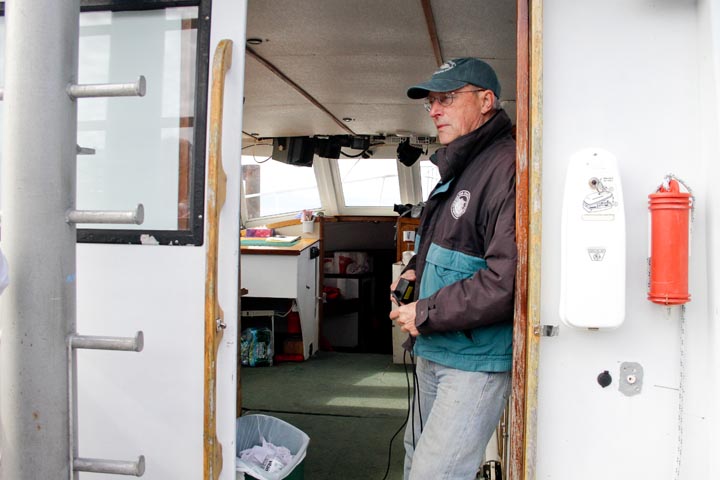
On the March whale survey, one fishing boat skirted between the whales and the shore while another passed farther offshore. Federal law strictly prohibits boaters from approaching within 500 yards of the animals without a permit, and the Coastal Studies team vigilantly radioed every ship in the area to stay away.
At one point a news helicopter came to investigate.
“I want them to know we’re working under a federal permit,” Mr. Mayo phoned to a colleague. “I don’t want them to have these images all over the TV that shows a boat practically sitting on top of the whales without them understanding these are scientists.”
In the end the whales seemed not to notice the commotion they had invited, and as the boat turned to head back into Provincetown harbor, one lively whale sought to dispel its popular image as a bumbling, hapless beast by athletically launching all several dozen tons of itself fully out of the water in a series of breaches.
“We don’t know why they do it,” Center for Coastal Studies scientist Christy Hudak said as she looked up from her makeshift on-board zooplankton laboratory.
After more than three decades with the Center in Provincetown, Mr. Mayo’s sense of wonder of the animals hasn’t diminished.
“Hey look — think of all the animals that people make a big deal about: a bear up in a tree, the swallows of San Juan Capistrano — this is much, much bigger,” he said. “And it’s right here on the coast and everyone can see it.”

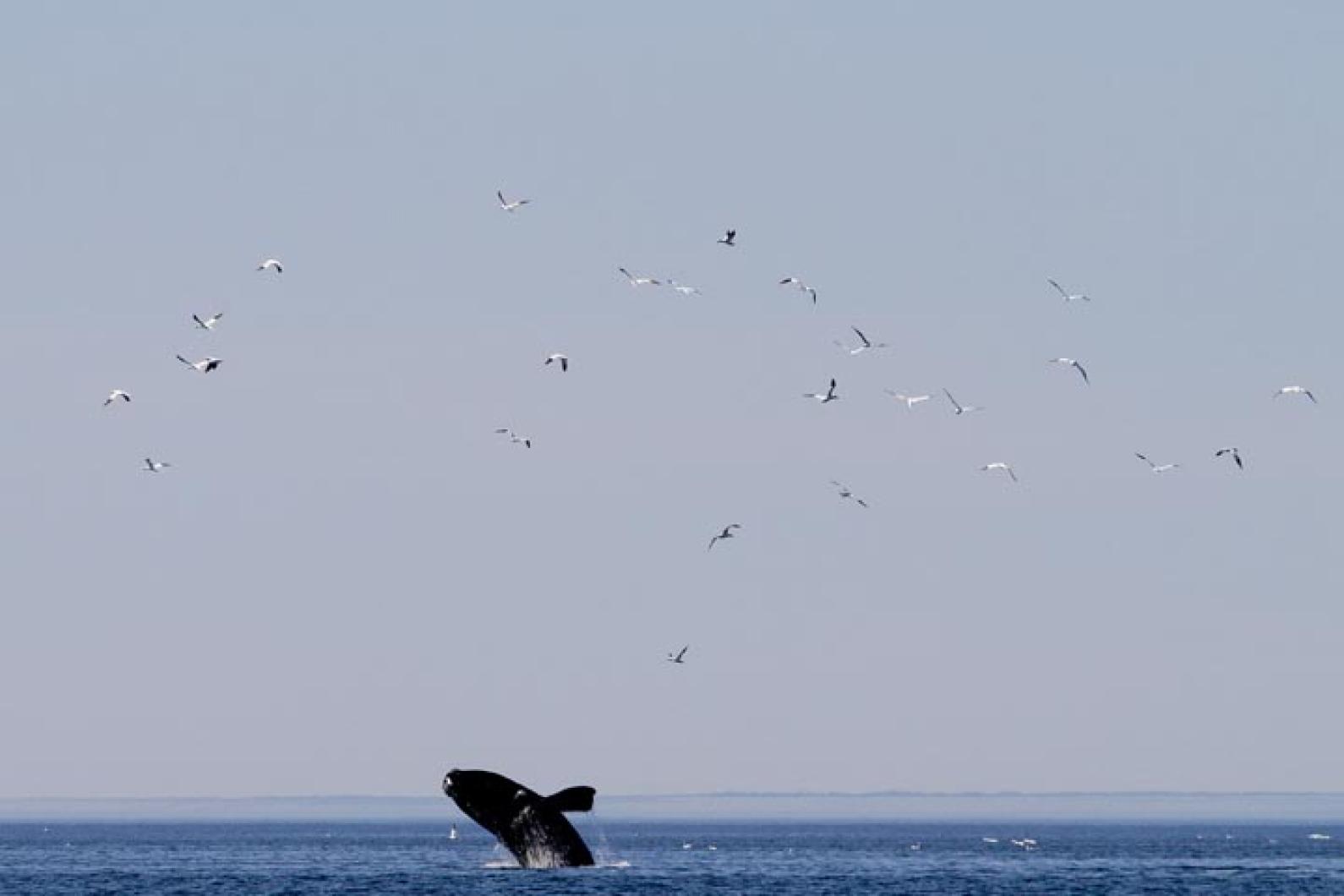
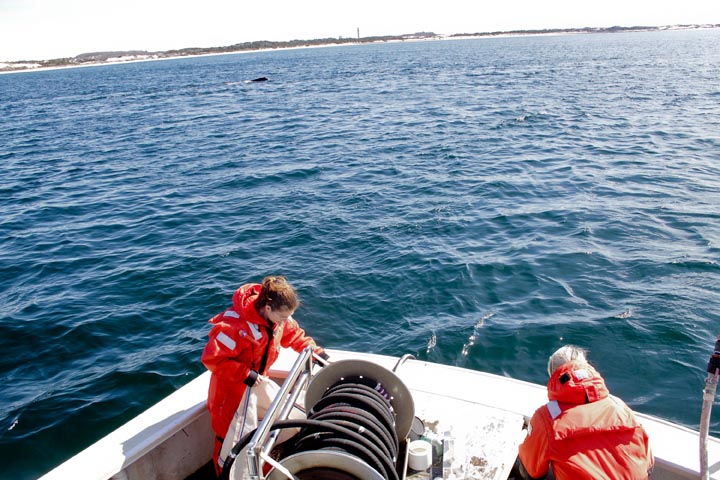
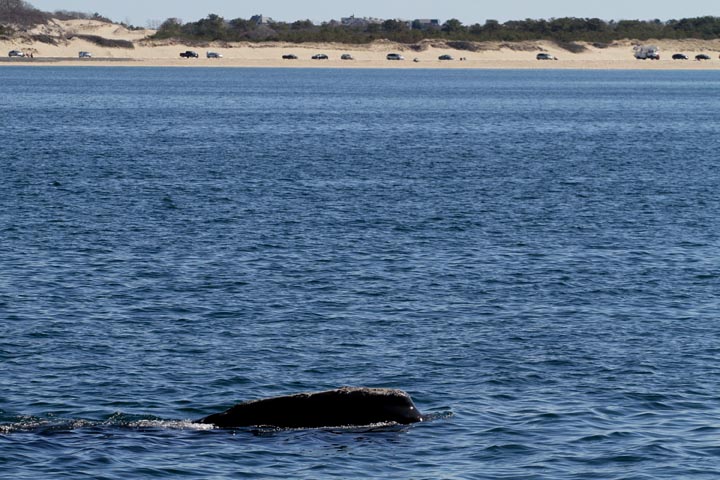
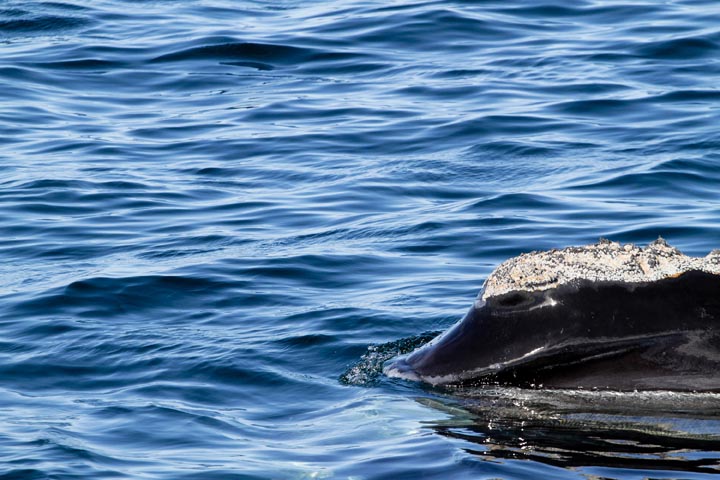





Comments
Comment policy »